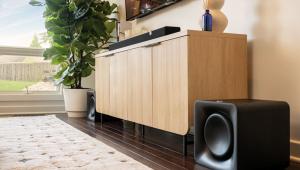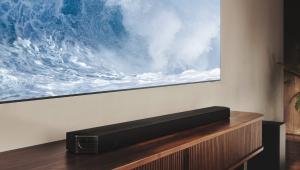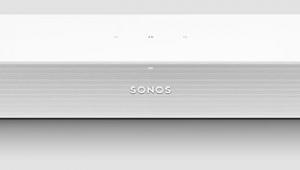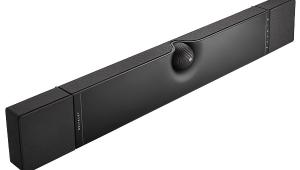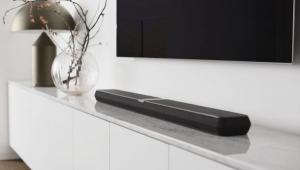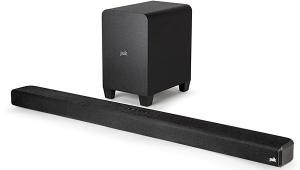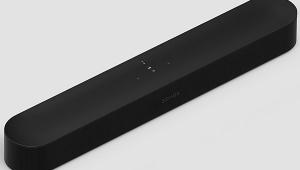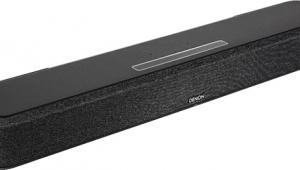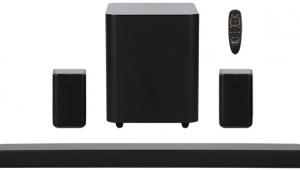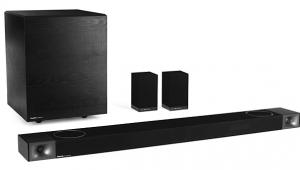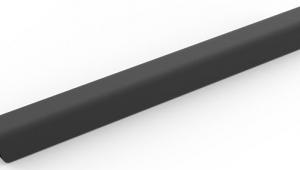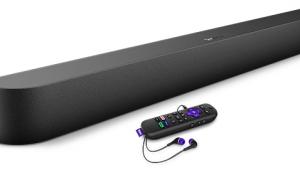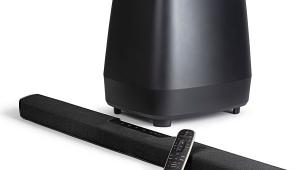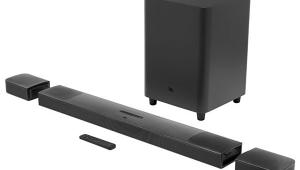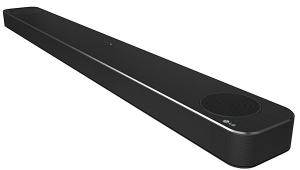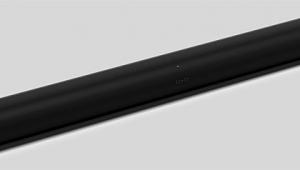Yamaha MusicCast BAR 400 Soundbar and MusicCast 50 Wireless Speaker Review
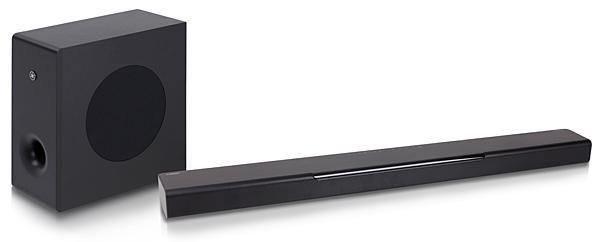
AT A GLANCE
Plus
MusicCast 50 can be used for wireless surround
DTS Virtual:X simulated surround processing
Simple setup with multi-room capability
Minus
Unnecessarily complicated user controls
No Chromecast built-in
THE VERDICT
A powerful system with expansive sound and deep bass that's further enhanced by the addition of Yamaha's MusicCast 50 as a wireless surround speaker.
At just under $500, Yamaha's MusicCast BAR 400 soundbar/subwoofer system is a great value. When you add the company's MusicCast 50 wireless speaker ($499) to use for surrounds, you get a stellar wireless 5.1 system that creates an immersive experience while easily integrating with your streaming music apps. The system connects via Wi-Fi, AirPlay, Spotify Connect, and Bluetooth. Its multiple listening modes include a Clear Voice mode that effectively enhances dialogue intelligibility by lowering the level of music and effects in movie soundtracks. Yamaha's iOS/ Android app makes multi-room and multi-speaker setup simple, and if Amazon devices are connected to your home network, Alexa skills can control MusicCast speakers.
Yamaha's BAR 400 has a sleek, elegant look for an under-$500 soundbar. A black metal grille covers the speakers, metallic sides, and back plate, while the system's LED indicators and touch-sensor controls are located on the top. The bar is equally suited for under-TV placement or wall mounting, with keyholes on the back along with a cardboard template for proper placement.
The bar features four 1.75- inch woofers and two 1-inch tweeters, and the subwoofer has a 6.5- inch cone driver. Total system power is 200 watts, with 100 watts driving the bar and subwoofer, respectively. Inputs on the bar include HDMI, optical digital, and analog stereo via minijack, along with Wi-Fi and Bluetooth connectivity. The HDMI input supports HDMI ARC and is 4K-compatible.

Setup of the BAR 400 and MusicCast 50 was easy. Although the printed manual mentioned only iOS support, I was able to download Yamaha's MusicCast app to my Samsung S8 from the Google Play store. I switched my phone to temporarily connect to the Wi-Fi coming from the soundbar and speaker, entered my home network information, and then both were ready for action. Using the app, it was simple to pair the BAR 400 and the MusicCast 50 for using the latter as a stereo wireless surround speaker, and the volume level for each channel could be configured using test tones.
I placed the BAR 400 on the shelf of my TV cabinet below a 65-inch Vizio TV. The subwoofer went in a front corner of the room, although its wireless connection meant it could liter- ally be placed anywhere in the space. I installed the MusicCast 50 on a wooden table against the back wall, about six feet behind the main listening position. My room is about 15 x 20 feet, and the BAR 400/MusicCast 50 combination had no problem filling it with sound.

Yamaha's remote control is small and cluttered, but once the system is set up, you'll mostly use it for volume control. There are buttons for input selection, plus separate ones for overall volume and subwoofer volume adjustment. There are also dedicated buttons for the Stereo, Surround, 3D Surround and Bass Extension sound modes. Now for my only real complaint about the system: all LED indicator lights are located on the farthest edge of the bar's top panel, making them difficult to see from most seating positions. If the bar were wall-mounted under the TV, they would be pretty much impossible to see. Also, the LED feedback sequence is needlessly complicated. For example, activating the Clear Voice or Bass Extension modes causes three lights to flicker three times for on, once for off. There also isn't a power indicator on the front of the bar.

The performance of the BAR 400 system with the MusicCast 50 positioned for surround sound was impressive. I went straight for action and cued up The Matrix with its Dolby True HD 5.1 soundtrack. The subwoofer deftly handled the LFE in the opening chase scene. Along with separate controls for subwoofer level, the remote has a convenient Bass Extension on/off button, and once optimized, I could leave the level set but quickly turn it off when the rest of my household turned in for the night. Using the Clear Voice function also helped for late-night viewing since I could turn down the overall volume while keeping dialogue intelligible.

Toggling between Surround and 3D Surround modes proved interesting. The Surround mode provided a very engaging experience, with a surprisingly large soundstage that extended well beyond the soundbar, while turning on 3D removed the rear surround info, but also introduced some slight sound artifacts in the process. Stereo performance was also impressive. The acoustic guitars on James Bay's "Hold Back the River" had such a wide, expansive presence, I found it almost surreal. I still had my floorstanding speakers set up about 8 feet apart on either side of the TV, and the sound appeared to be coming from those speakers instead.

Before I had the full BAR 400 with surrounds system going in my media room, I had set up the MusicCast 50 in my living room to stream music. The speaker's bass performance was admi- rable for its size—certainly more substantial than what I've heard from Google, Apple, or Amazon wireless speakers. The overall sound had a very warm quality, although some male vocals bordered on tubby and veiled. That said, I appreciated the speaker's lack of harshness at loud volumes. I could see a beautiful friendship beginning with the MusicCast 50 as I shuttle from the living room to my media room—something the MusicCast app's multiroom capability makes possible.

Combining Yamaha's Music- Cast BAR 400 sounbdar with the MusicCast 50 speaker is the best way I know of to get a good-sounding wireless surround sound system without breaking the bank. When my only complaint in a review involves LED indicator lights, you know it's a good thing. I imagine the first thought of anyone who upgrades from their TV's built-in TV speakers to this system would be, "Why did I wait for so long?"
- Log in or register to post comments

